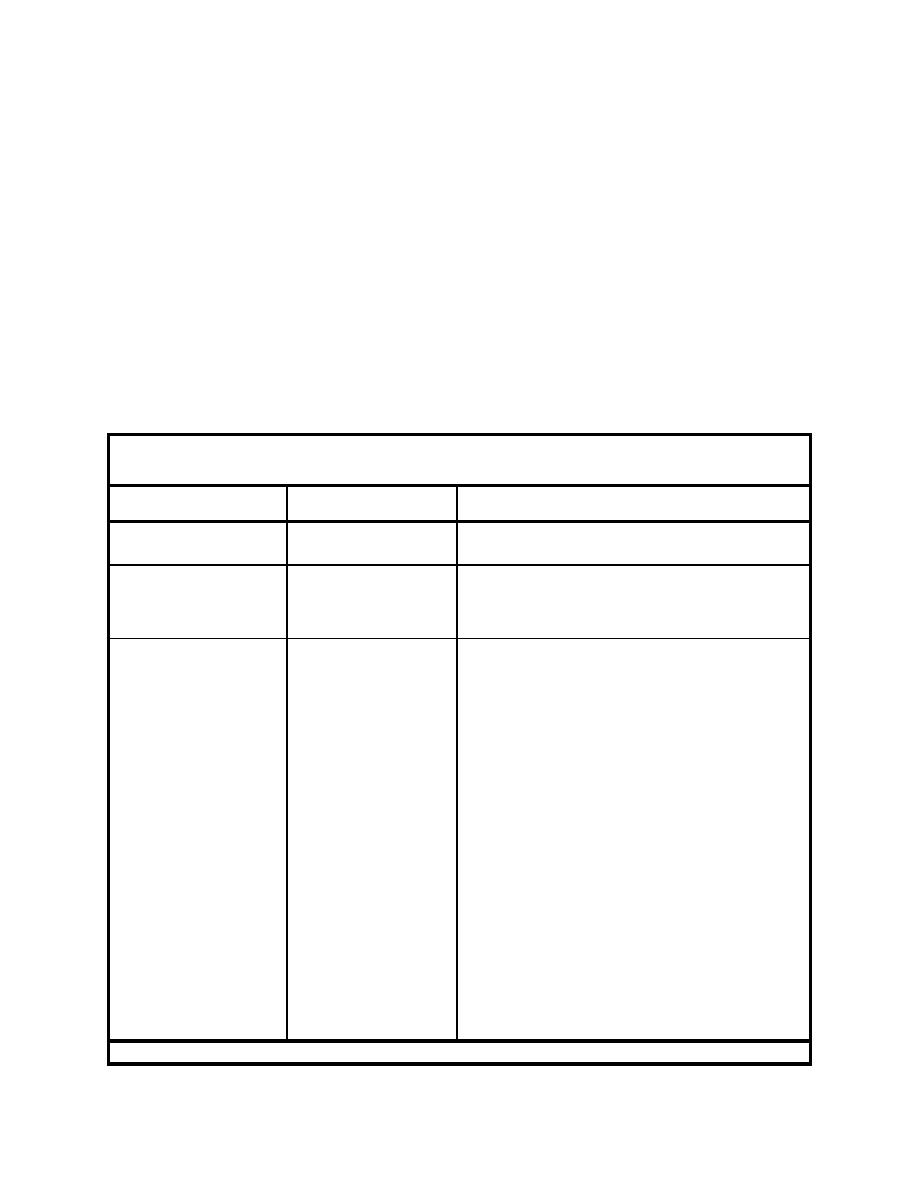 |
||
|
|
||
|
Page Title:
Table 6. Data Requirements and Testing Standards for Soils and Dredged Material |
||
| |||||||||||||||
|
|
 ERDC TN-DOER-R6
December 2004
1993). This increased water content results in potentially significant initial short-term quantities of
leachate. However, this leachate flow will decrease greatly as the dredged material consolidates and
seals the bottom of the fill.
Quality of leachate Leachate provided by dredged material within CDFs may contain more
suspended and colloidal materials than landfill leachate. Special consideration must be given to the
operation of the leachate collection system and the selection of the system filter material overlying the
drainage layer to ensure that it will not become clogged by suspended and colloidal materials
contained within the leachate.
DATA REQUIREMENTS AND TESTING
Soils and Dredged Material. Design of CDF soil and dredged material liners requires testing of
individual soils and sediments for determination of optimum particle size, Atterberg limits, compactive
efforts, moisture content and dry unit weight, hydraulic conductivity, and permeability. Data
requirements and testing standards for soils and dredged materials are provided in Table 6.
Table 6
Data Requirements and Testing Standards for Soils and Dredged Material
ASTM Procedures and
Comments
Requirement
References
Unified Soil Classification
ASTM D2487-00
Used to classify engineering properties of soils based
System (USCS)
(ASTM 2000a)
on particle size and organic matter content.
Atterberg Limits
ASTM D4318-00
Provide water contents at which a fine-grained soil or
(ASTM 2000d)
sediment changes from a semisolid to a plastic solid
EM 1110-2-1906
and from a plastic solid to a semiliquid.
(USACE 1970)
Ideally, optimum compactive effort should be evaluated
Compactive Effort
in actual field conditions through a series of test
sections. However, the cost of determining design
parameters in this manner is often prohibitive (Qian
1995). Most design criteria are thus developed from
laboratory tests employing methods of compaction that
best match actual field compaction effort (Qian 1995).
ASTM D698-00a
Standard Proctor Test
Represents an average compactive effort delivered to
soils in the field.
(ASTM 2000g)
Represents maximum compactive effort delivered to
ASTM D1557-00
Modified Proctor Test
soils in the field.
(ASTM 2000h)
Recognizing that the greatest hydraulic conductivities
Daniel and Benson
Reduced Proctor Test
would be realized in soils and dredged material
(1990)
experiencing the least compactive effort, Daniel and
Benson (1990) developed an altered standard Proctor
procedure called a "reduced" Proctor test. In this case,
only 15 drops of the hammer per lift are used instead of
the standard Proctor test use of 25 drops. This reduced
compactive effort is believed to represent the minimum
level of compaction for a typical soil or sediment liner
(Qian 1995).
(Continued)
15
|
|
Privacy Statement - Press Release - Copyright Information. - Contact Us - Support Integrated Publishing |